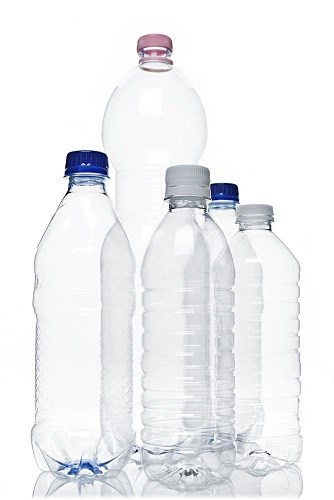Catalyst Promises 'Better' PET for Preform Extruders and Bottle Makers
Patent-pending and tested catalyst produces PET with improved thermo-oxidative stability and other advantages for processors.
A novel catalyst touted as the first to have both sufficient selectivity and activity in both polycondensation and solid-state polymerization can produce PET with the desired physical properties and thermo-oxidative stability for bulk industrial-scale PET manufacture and subsequent processing.
The patent-pending catalyst from U.K.’s Catalytic Technologies Ltd., enables PET producers to manufacture high-stability, high-intrinsic viscosity (>0.70 dL/g) PET, unlike any other condensation catalyst currently available, including the industry standard antimony catalyst. The catalyst is a ‘titanium (Ti) only’ system, requires no co-catalyst and contains no heavy metals.
The company has proven the brand new technology during a catalyst trial on Uhde Inventa-Fischer’s state-of-the-art 2R-MTR continuous pilot plant in Berlin, Germany. The trial compared the new CTL Ti638 UP catalyst to an antimony (Sb) reference with outstanding results. Matching the reaction rate of 250 ppm Sb with just 10 ppm of Ti, the trial demonstrated that not only could process parameters remain unchanged, but the high-intrinsic viscosity resin produced had unrivalled thermo-oxidative stability and excellent physical and optical properties.
Moreover, the trial resin was also converted into preforms and bottles which further demonstrated the unique thermo-oxidative stability during resin melt processing, and the intrinsic advantages of using the new CTL Ti catalyst technology. In addition to the several advantages for PET producers, here are the key features highlighted for preform extruders and bottle/container manufacturers and fillers:
For preform extruders:
• Lower crystallinity chip requires 40% lower energy for melt processing
• Lower crystallinity resin reduces injection cycle times
• Reduced polymer degradation reduces IV loss, acetaldehyde and carboxylic end-group generation due to Ti-PET thermo-oxidative stability and more facile melt processing conditions
• A 55% lower acetaldehyde level minimizes storage time before bottle blowing
• Brighter (by up to 4 L*) and clearer preforms
• Heavy-metal-free preforms
For bottle/container manufacturers and fillers:
• 10% energy increase required for bottle blowing due to reduced metal particulate content on equal preform weight-for-weight basis and in the absence of reheat additives.
• A 60% lower residual acetaldehyde and 15% lower carboxylic end-group content
• Improved bottle clarity and brightness (up to 4L*)
• Higher stretch induced crystallinity bottle side walls enables bottle lightweighting, bottles that are more resistant to shrinkage along with improved barrier properties
• Lower metal residue minimizes thermal crystallization allowing for increased hot-fill temperatures without causing container shoulder to turn opaque
• Wider thermal operating window for bottle blowing due to lower Tg (glass transition temperature) and higher Tc (thermal crystallization) onset allowing for improved definition of intricate bottle designs
• Heavy-metal-free bottles

Related Content
-
50 Years of Headlines … Almost
I was lucky to get an early look at many of the past half-century’s exciting developments in plastics. Here’s a selection.
-
50 Years...600 Issues...and Still Counting
Matt Naitove marks his first half-century in plastics reporting, with a few of his favorite headlines.
-
First Water Bottles With Ultrathin Glass Coating
Long used for sensitive juices and carbonated soft drinks, KHS Freshsafe PET Plasmax vapor-deposited glass coating is now providing freshness and flavor protection for PET mineral water bottles.
















